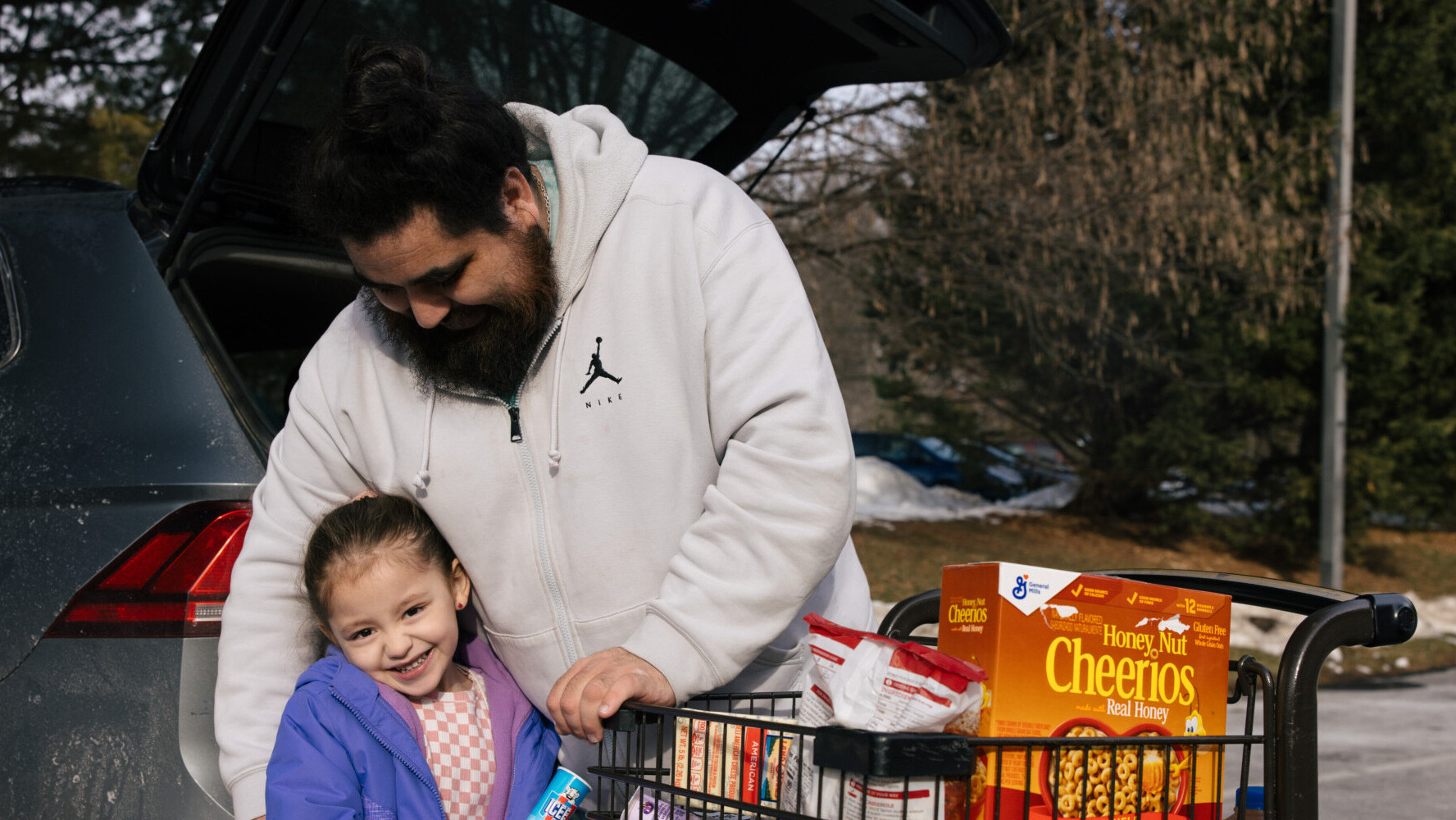Written By: Allie Henning, Senior & Child Nutrition Programs Coordinator
Being a kid should be fun and free of the stressors many of us adults face, but for many kids in the Blue Ridge region, hunger is a constant worry. One in 12 children in our area are experiencing hunger.
As the Food Bank’s senior and child nutrition programs coordinator, I see the realities of childhood hunger every day. Kids experiencing hunger may not do as well in school, may have trouble focusing, or may struggle with behavioral issues. It’s hard for students to focus on schoolwork or making friends when they’re feeling hungry.
Many families are unable to provide consistent sources of nutritious food for their children. The Blue Ridge Area Food Bank offers several childhood nutrition programs to help bridge the childhood food insecurity gap. We offer programs that provide produce, hot meals, and shelf-stable food items to children and families year-round, giving kids a better chance to meet their full potential and just enjoy being a kid.
There are lots of myths surrounding food insecurity and childhood hunger. This National Nutrition Month, I hope to provide some clarity and insight into some of the questions or issues you may have about our work in child nutrition.
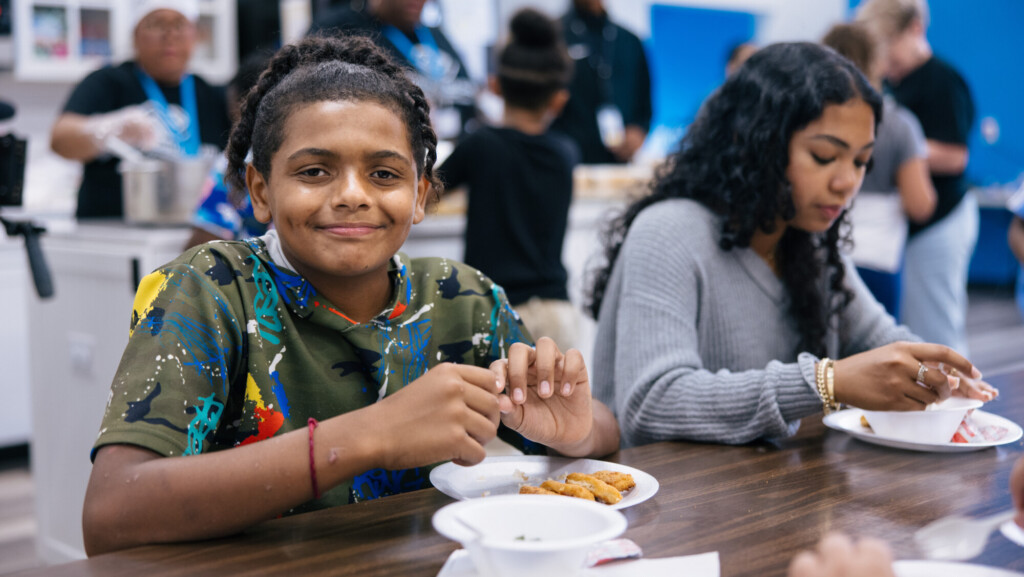
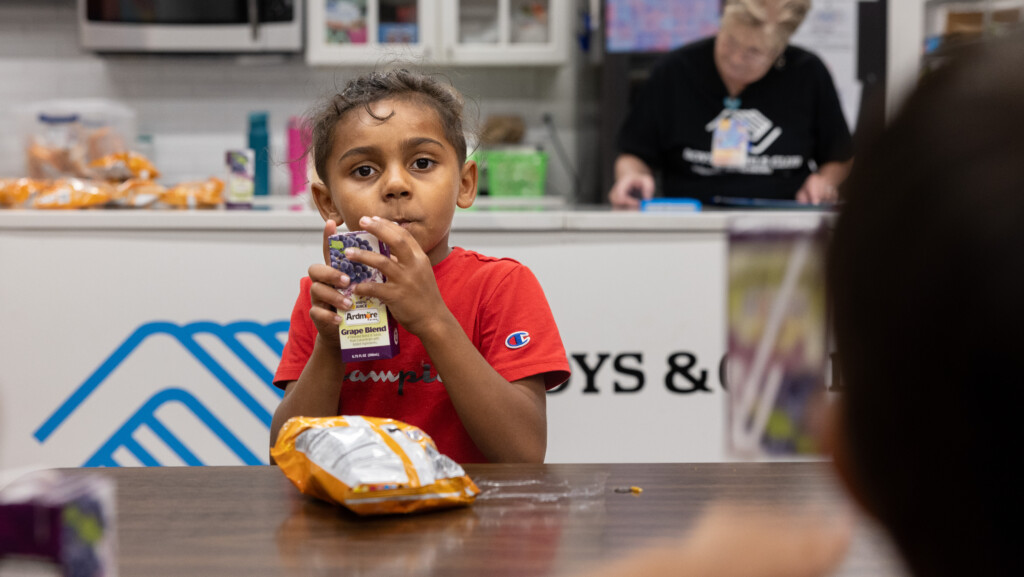
Meet Tyleeq and AJ
Tyleeq, AJ, and their other brother Drealyn are young members of the Boys and Girls Club in Waynesboro, a partner of the Blue Ridge Area Food Bank. They receive nutritious after school snacks and summer meals through the program.
“Eating food at the Boys and Girls Club is great,” Tyleeq said. “It means when I get home, I’m not hungry.”
Myth #1: Children face hunger due to the irresponsibility of their parents
Most of the children we help feed have parents who are working but are still not able to cover all the costs of running a household – such as childcare, rent, healthcare, medications, and transportation. Many parents are faced with very hard decisions about where to spend their money, and this is only made more difficult by the costs of caring for children.
Groceries are more expensive than ever, and not everyone has access to the same support systems and privileges to help them recover from a financial crisis, including the many people who faced job loss or economic hardship during the pandemic. Parents need to figure out how to pay for necessary expenses like clothes, school supplies, sports equipment, food for growing kids, toys, and so much more. Our childhood nutrition programs and partner food pantries help ease some of that burden by allowing parents to not have to choose between food and other necessities.
At the Food Bank, we serve everyone without judgement. We do not know what kind of circumstances people are facing, and we feel that we are called to help feed people who are hungry, not choose who is most worthy.
Myth #2: Free and reduced-price school meals are enough to bridge the hunger gap for kids.
While our school systems do so much for our kids by providing breakfast and lunch, there are still gaps that our schools are simply not able to fill. Hunger doesn’t take a break, so when kids are out of school, even just for the weekend, there is a need to be filled.
The Blue Ridge Area Food Bank helps our schools fill in those gaps with our childhood nutrition programs. We work with partner food pantries, community partners, and schools to send kids home on Fridays with snacks and food for the weekend through our Backpack Program. Our partners at local Boys and Girls Clubs and neighborhood centers help provide nutritious snacks and suppers to kids after school. We also participate in the USDA’s Summer Food Service Program, which works to provide children with free breakfast, lunch, and snacks all summer long to keep kids nourished while school is out.
Myth #3: Children or adults that are referred to as “overweight” cannot be food insecure.
Parents who are working with a limited budget are often trying to stretch their dollars. Whole, fresh foods are often more expensive, so families can often only afford to buy inexpensive, calorie-rich foods that satisfy immediate needs. In addition, many parents whose families are living with hunger work jobs that require long hours, or even multiple jobs, and do not have time to cook whole meals as often as they would like.
Many of our guests often live in “food deserts,” where a grocery store may not be readily available. Many parents with low incomes may want to buy healthier food for their family but lack transportation and resources to access nutrition-dense foods like fresh produce, lean protein, and whole grains.
At the Food Bank, we are providing fresh, nutritious meals through our Kid’s Café and Summer Food Service programs to fill a gap that some families may not be able to meet otherwise. Through our Good Food School Market program, we send high school students home with hundreds of pounds of produce each month, providing their families with a source of free and fresh food.
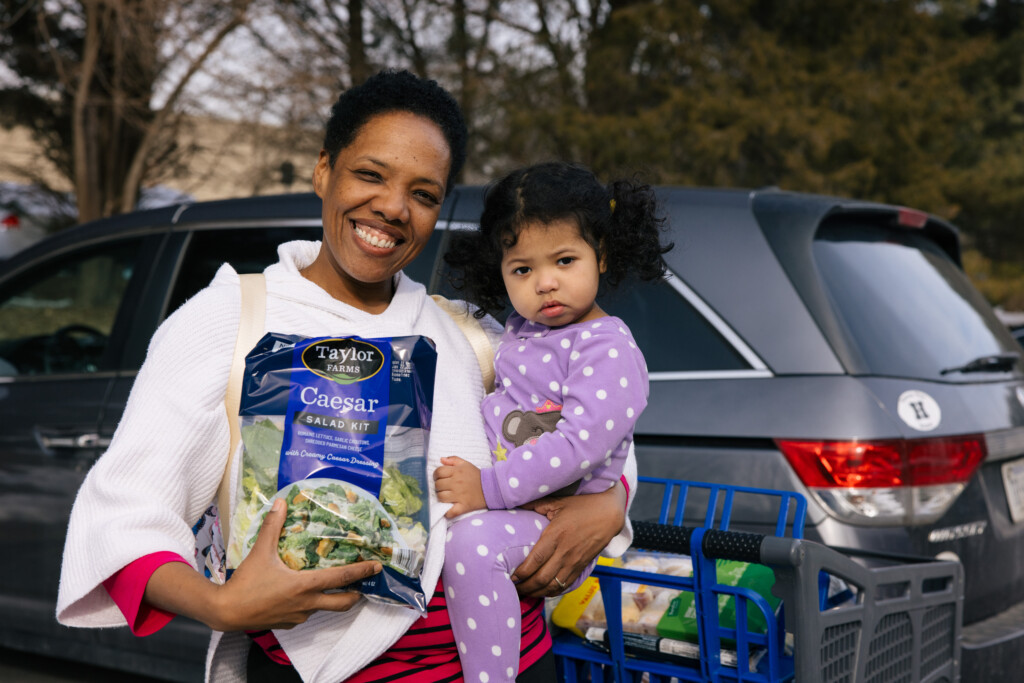
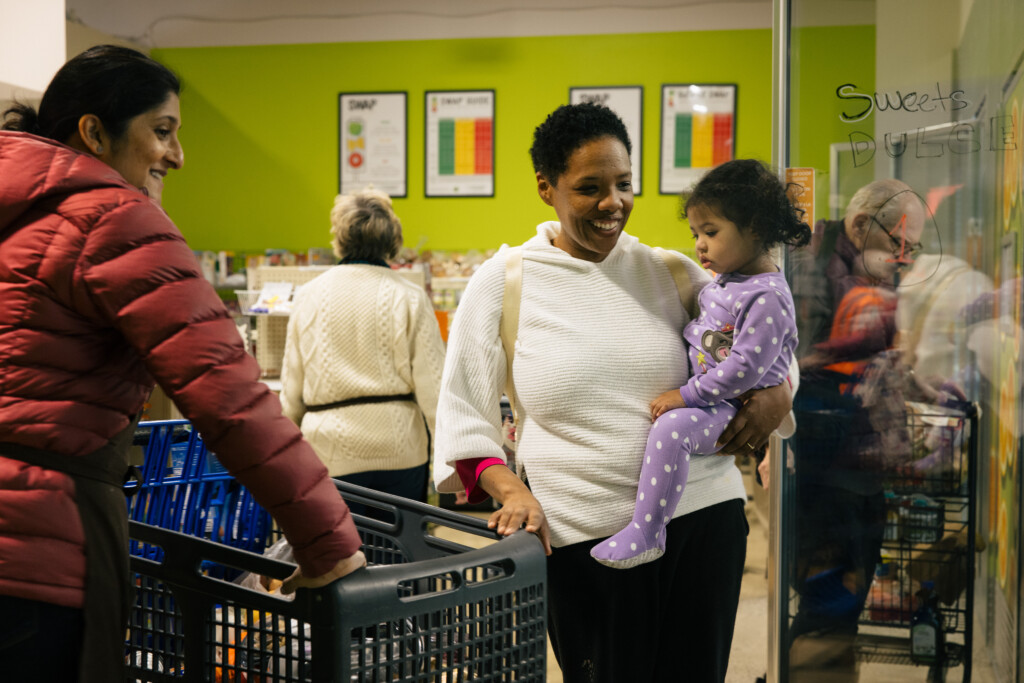
Meet Katherine and Mary
Katherine, a mom to three kids and native of the Dominican Republic, has been a guest at Loudoun Hunger Relief (a Food Bank partner pantry) for the past two years. On a recent visit, she brought her 2-year-old daughter Mary.
“This food is so important to us. I can make sure I take home healthy things for us to eat,” Katherine said. “I want to make sure I give my kids the best.”
Myth #4: SNAP (Supplemental Nutrition Assistance Program, formerly food stamps) is bad for the economy and does not make a difference for children living with hunger.
SNAP promotes long-term health and well-being, especially for children. Research shows that SNAP reduces poverty and food insecurity, and that over the long term, these impacts lead to improved health and economic outcomes, especially for those who receive SNAP as children. SNAP dollars go directly into communities, bolstering local economies and supporting household financial stability.
The Summer EBT program is a new program being launched by the USDA this summer that will provide extra SNAP dollars to families with school-aged children during the summer months when schools are closed. This will allow families to fill the gap of missing school breakfasts and lunches a little easier.
Myth #5: There is nothing I can do that will make a difference.
There is so much you can do to help your community and the Blue Ridge Area Food Bank! Here are four ways to support the Food Bank and make a difference within your own neighborhood:
- Donate funds: Every $1 donated helps provide four meals to families living with hunger. Donating your money is the best way for us to get as much food out into the community as we can. We greatly appreciate any support you can provide. You can give now here.
- Donate food or organize a food drive: You can always donate food to us directly at any of our four branch locations—Verona, Winchester, Lynchburg, Charlottesville. This food will be given to folks who come to the Food Bank for Emergency Food Boxes or will be distributed to our local partner food pantries that provide for families in your area. Learn more here.
- Volunteer: We could not do what we do without our volunteers! If you are interested in donating your time, click here to see all of our volunteer opportunities throughout our service area!
- Advocate for public programs: Programs like SNAP, Summer Food Service, and Kid’s Café are highly dependent on federal funding. Please consider contacting your local representatives to advocate for the Farm Bill, securing continued funding for and expansion of public benefits programs, so that the Food Bank can continue to work toward ending hunger in the Blue Ridge area!

